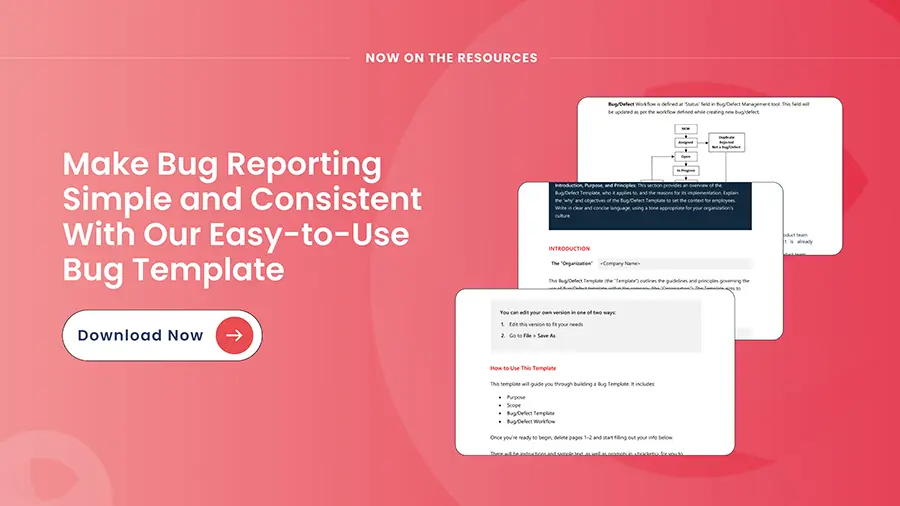The term software quality gap refers to the discrepancy between the desired level of software quality—based on user expectations, business needs, or industry standards—and the actual quality delivered in a software product. This gap often shows up as unmet requirements, functional issues, performance shortcomings, or bugs that degrade user experience and business outcomes.
The number one cause of these gaps is insufficient test coverage due to a lack of automation and reliance on manual testing. Other contributing factors include time and budget constraints, fragmented processes, expanding application types, evolving requirements, and limited awareness of better technologies.
This blog explores how test automation can effectively bridge the quality gap and empower teams to deliver faster, higher-quality software and provide a practical roadmap to get started.
Challenges with Manual Testing
Manual testing plays a critical role in uncovering unexpected user interactions and identifying edge cases through exploratory testing. However, relying solely on manual testing for feature coverage in frequent release cycles—such as weekly or bi-weekly—poses significant challenges.
The scale and complexity of modern applications make it impractical for manual testers to cover every feature. Additionally, traditional manual testing often follows a waterfall model, where testing happens after development is complete. This delay not only increases the risk of defects being found late but also widens the software quality gap, leaving critical defects undetected.


How Test Automation Bridges Quality Gap
Introducing test automation into your testing strategy transforms how teams manage quality, risk and delivery. Here are the major benefits and how they map to closing the gap:
- Accelerating Testing Cycles: Enabling parallel testing and reducing feedback loops for faster iterations.
- Improving Scalability: Covering large-scale applications and complex scenarios beyond the reach of manual methods.
- Enhancing Reliability: Minimizing human error in repetitive tasks and ensuring consistency across releases.
- Maximizing Effort with Reusability: Allowing pre-built scripts to be reused across multiple projects, reducing redundancy.
With these benefits, automation aligns seamlessly with agile workflows, enabling businesses to scale their testing efforts while maintaining quality standards.
How to Start Your Test Automation Journey
Despite the clear benefits, some organizations hesitate to adopt automation due to short-term goals, perceived costs, or a lack of awareness of its potential. However, viewing test automation as a strategic investment rather than an expense is essential for long-term success.
Here are actionable steps to start your test automation journey:
- Define Objectives and Business Value:
Identify the goals of automation, whether it’s faster releases, improved coverage, or reduced costs. Establish measurable KPIs that tie directly to business outcomes. - Assess Current Testing Landscape
Evaluate your testing process to pinpoint bottlenecks and opportunities where automation can deliver the most impact. - Select the Right Tools
Choose tools that align with your technology stack, are scalable, and integrate seamlessly into you CI/CD pipelines. - Adopt a Scalable Framework:
Opt for a framework that supports modularity, reusability, and compatibility with your existing workflows. - Start Small, Pilot, and Scale Gradually:
Begin with a high-impact area, such as regression testing. Build a solid business case with this pilot and scale gradually, using insights from the initial phase. - Build a Skilled Team:
Upskill your QA teams in automation tools, frameworks, and best practices. Foster collaboration with development and DevOps teams for seamless execution. - Continuous Validation and Optimization:
Regularly review outcomes, updating scripts and processes as your application evolves. Use ROI metrics like reduced manual effort and improved defect detection to refine strategies. - Stakeholder Buy-In and Communication:
Educate stakeholders on the long-term benefits of automation and maintain transparency about progress and challenges to secure ongoing support.
Leader’s Perspective: Why Skipping Automation Is Risky
Organizations are making great strides in development, yet test automation often lags behind—a trend I’ve witnessed firsthand in over 5,000 PoCs throughout my career. The truth is, scaling test automation doesn’t have to be overwhelming. Start small, build a strong business case, and gradually scale while educating stakeholders on the long-term risks of skipping testing. Bridging the quality gap is key to delivering reliable software and ensuring sustainable growth.
— Raghuveer Alapati, VP of Global Delivery, Enhops
Ready to Bridge the Quality Gap?
Kickstart your test automation journey with Enhops’ ImpactNOW program, a pilot project designed to help you unlock the full potential of automation. Gain tailored insights, best practices, and actionable strategies to scale your automation efforts seamlessly.
Sign Up for ImpactNOW and experience the power of test automation firsthand!




